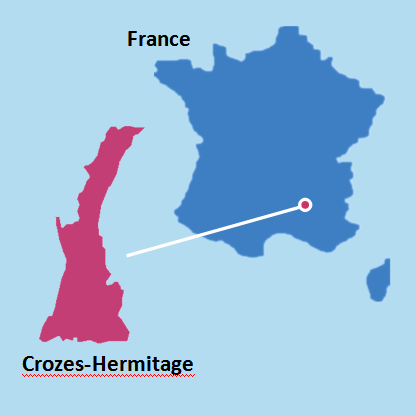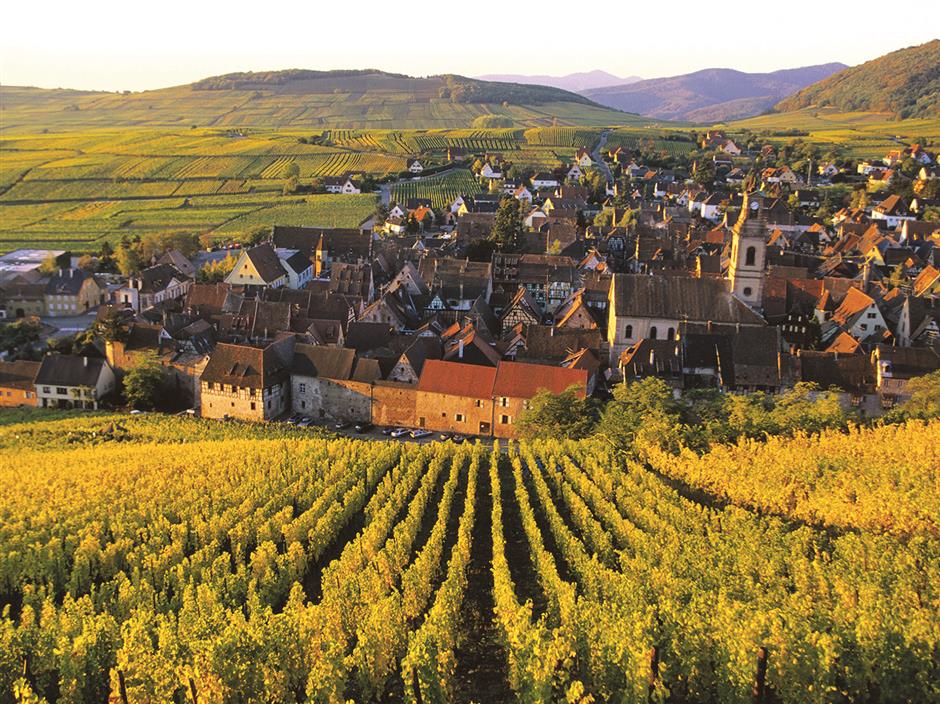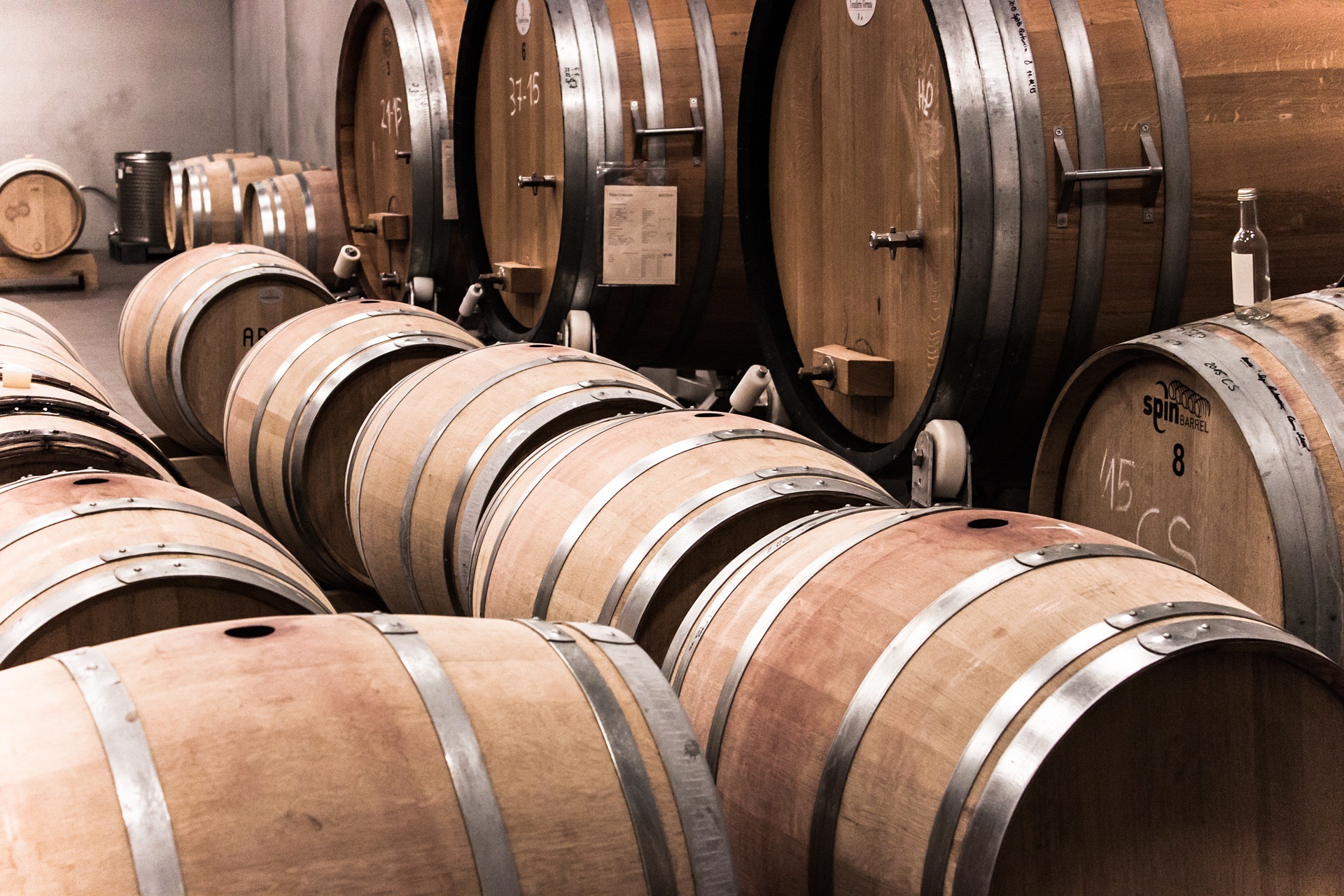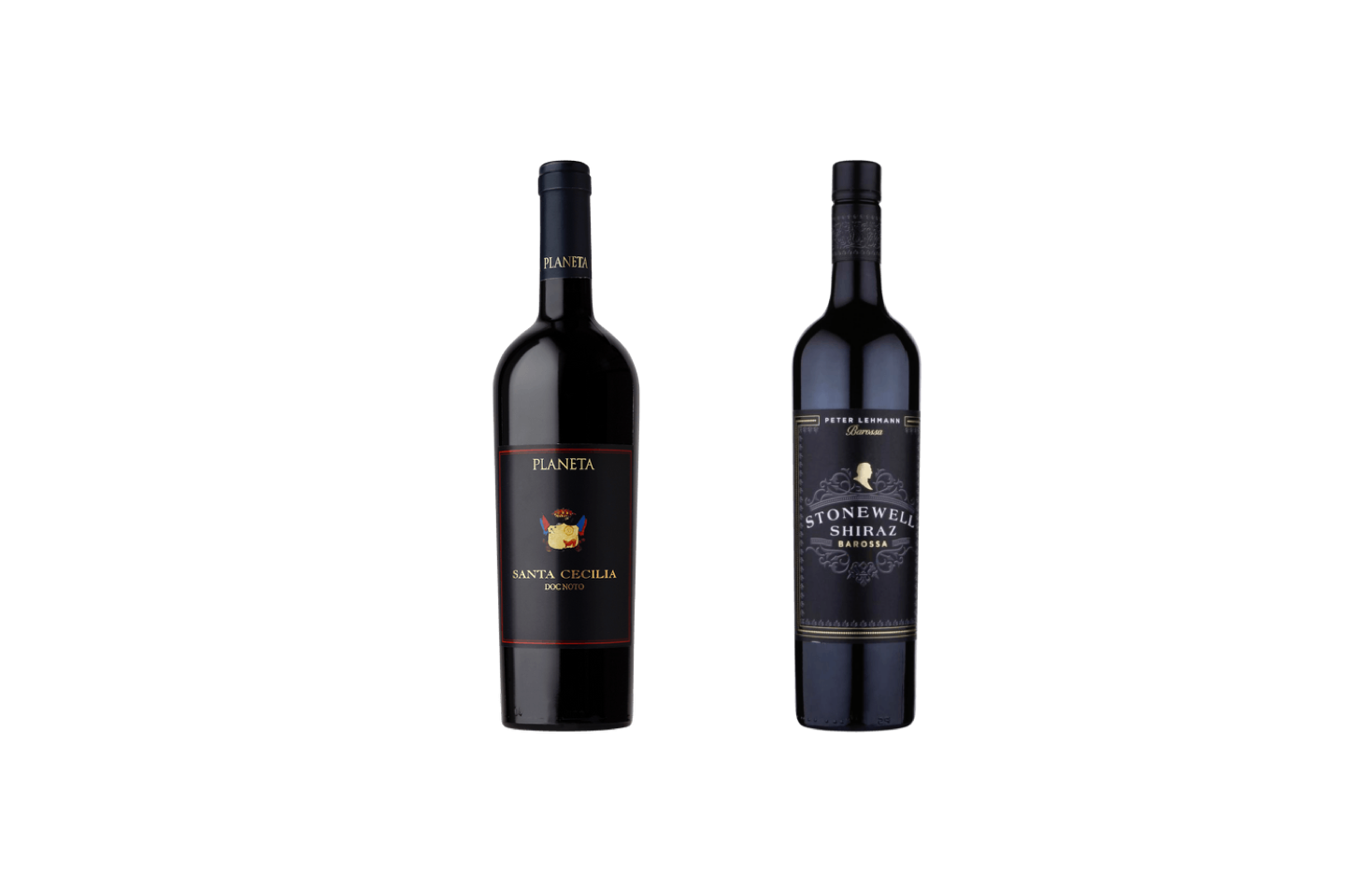Enjoying a top northern Rhone red wine is one of the wine world’s most profound experiences, unfortunately it is also one of the most expensive. In this week’s column I’ll introduce less costly ways to experience the intriguing red and dark fruit, herbal, spice and meaty qualities of northern red wines. Surrounding the prized hilltop Hermitage vineyards are the Crozes-Hermitage vineyards that have rocky, sand and clay soils. Crozes-Hermitage is the largest AC in the northern Rhone accounting for half of the region’s production. While not as structured or complex as the Hermitage and Cote Rotie wines, a good Crozes-Hemitage offers a lighter, more approachable style of wines than its more famous neighbors. The best of Crozes-Hermitage wines exhibit some of the qualities of Hermitage wine, albeit in a lighter more simple style. Croze-Hermitage wines are also some of the more reasonably-priced French wines.
Wine has been cultivated in the Rhone Valley since the Romans arrived two millennium ago and Hermitage wines were first documented in the 10th century. Crozes-Hermitage is a much newer wine. In 1846, regional winemakers held a tasting of red wines and praised the wines made from the lower vineyards surrounding the Hermitage vineyards. The panel found these wine offered some of the genuine qualities of Hermitage. In 1937, Crozes Hermitage was officially recognized as its own appellation and granted AC status. All Crozes-Hermitage wines must have at least 85% Syrah grapes and may have up to 15% of the white wine varieties Marsanne and Roussanne. Many modern Crozes-Hermitage wines are made with only Syrah and there’s a tendency to use too much oak in the aging.
The best of Crozes-Hermitage wines are true to their heritage of being a lighter less serious version of their more weighty hilltop neighbors with plenty of exhillerating fruit and spice characteristics. When too much oak is used the wines lose the lively fruitiness and more closely resemble generic new world syrah wines. When picking a Crozes-Hermitage wine, being true to the terrior and historic style are important factors in selecting the wines.
Because of their fruity and spicy qualities, Crozes-Hermitage wines are some of the best red wines to enjoy with slightly spicy Chinese meat dishes that you may not serve with more serious wines. Three dishes I often enjoy with a good Crozes-Hermitage are Yunnan style Lijiang Style Stir-fried Beef (丽江风味爆炒牛肉), Jiangxi style Savory Hot & Crisp Tripe (香辣脆肚) and Sichuan Kung Pao Chicken (宫保鸡丁). In all three cases, the wine adds delicious additional flavors dimensions to the dishes while not being overpowered by the spices in the dishes. The tannins in the wine also facilitate digestion of these somewhat heavy meat dishes while cleansing the palate.
Cave de Tain is a large cooperative that accounts for about half the Crozes-Hermitage vineyards. They make some wines themselves and also sell grapes to other producers. Three of the most important northern Rhone’s producers with extensive vineyard holdings that make consistently good Croze-Hermitage wines are Paul Jaboulet Aine, E. Guigal and M. Chapoutier. I recommend these wines because they reflect the true character of Crozes-Hermitage and are widely available at reasonable prices in Shanghai.
Paul Jaboulet Aine Crozes Hermitage Les Jalets, 2005
“named after the small pebbles left by alpine glaciers that are found in some Crozes-Hermitage vineyards, the wine has a ruby red color, lively nose of red fruit and exotic spices and plenty of fresh fruit flavors and a mocha and licorice finish”
Guigal Crozes-Hermitage
“renowned for their three single vineyard Cote Roties, their Crozes-Hermitage has a ruby red color with violet hue, lively nose of dark fruit and spices and back berry and plum flavors and a smooth finish with hints of leather”
Chapoutier Crozes-Hermitage Petit Ruche Rouge, 2008
“one of the better big producers of Crozes-Hermitage, this wine features a deep ruby red color, scents of red berries and cassis and intriguing fruit, spice and olive flavors with hints of tobacco and a reasonably long finish”





